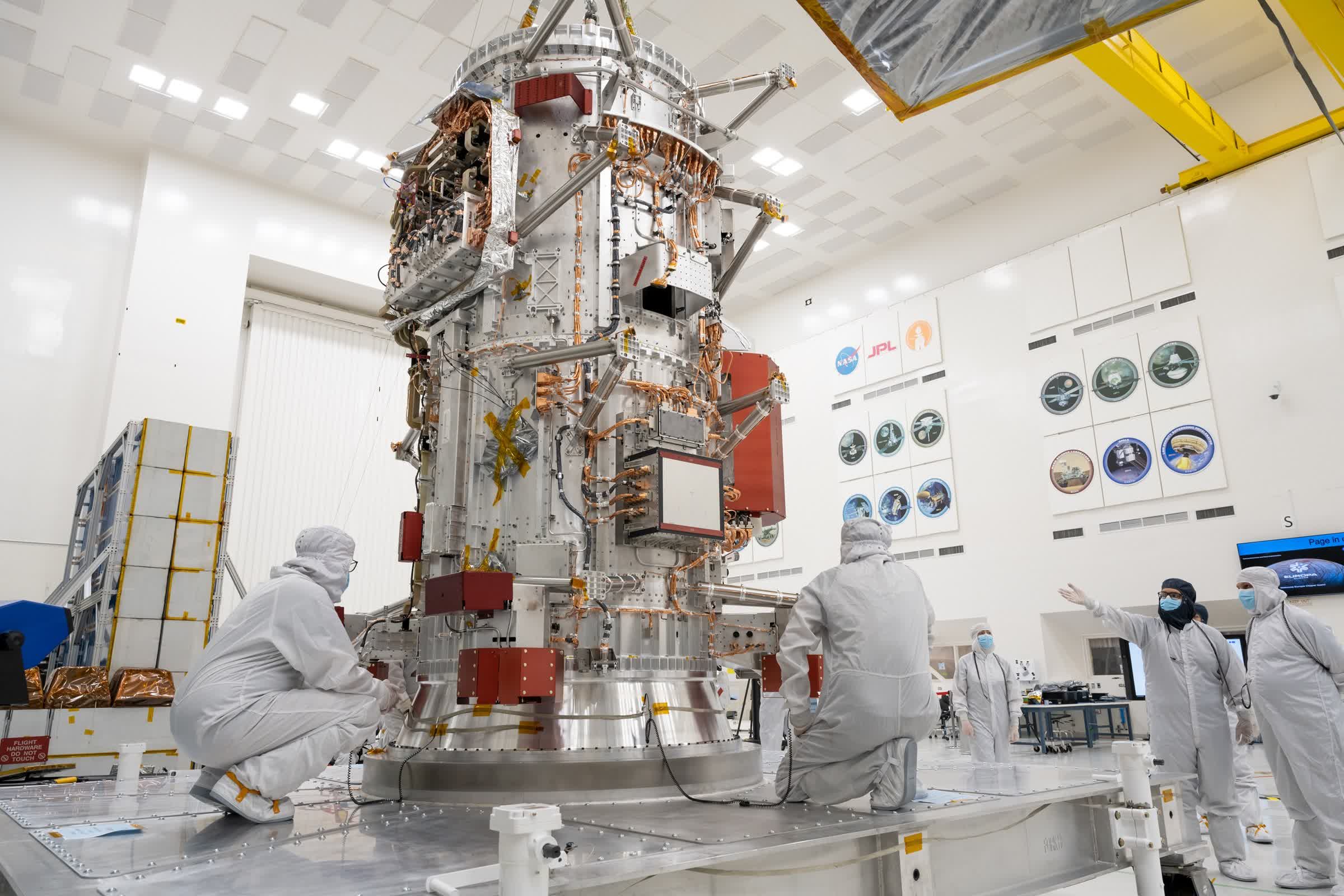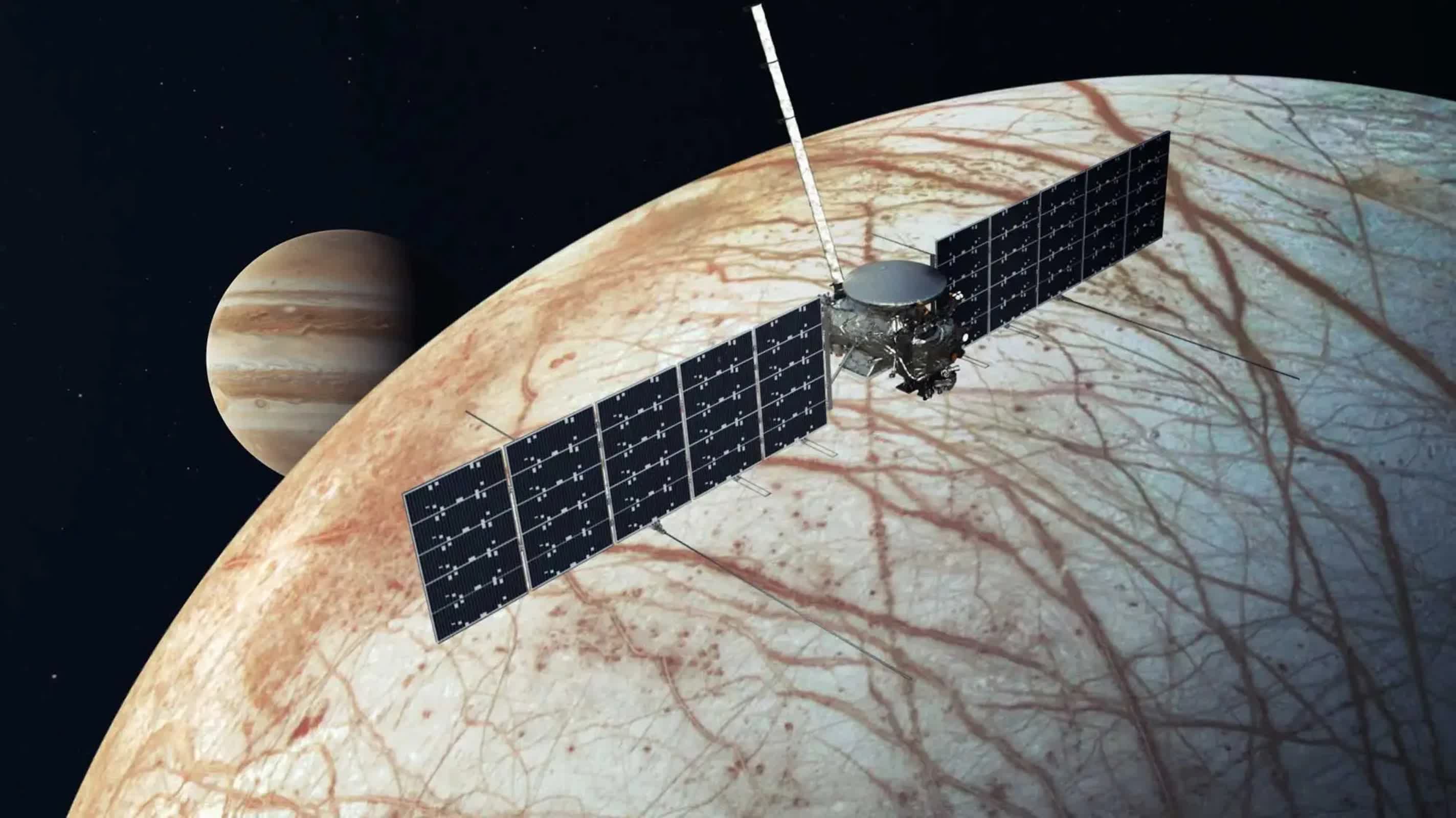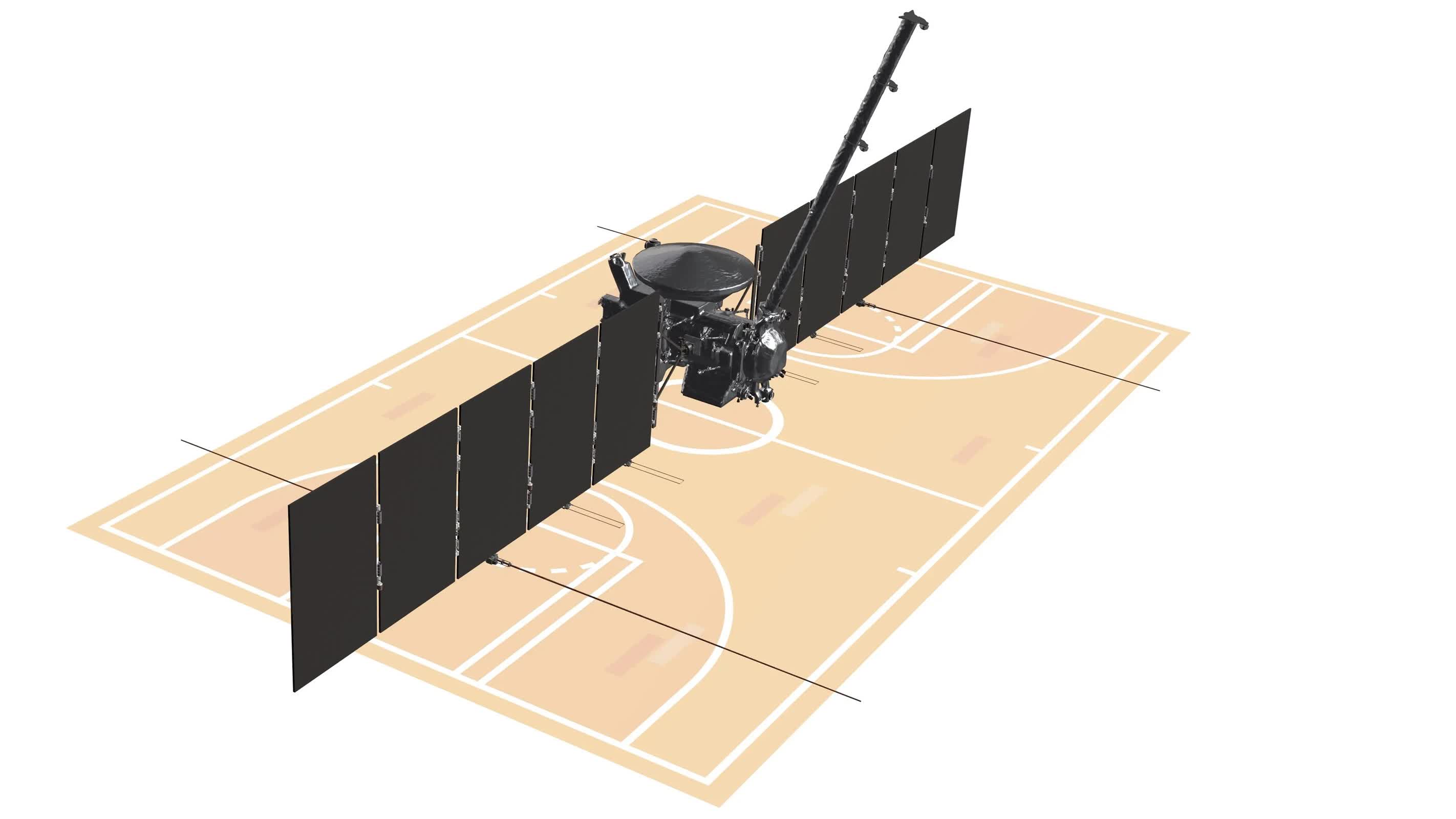In a nutshell: The Europa Clipper mission is an important step in our understanding of potentially habitable worlds beyond Earth. By studying Europa's composition, internal structure, and potential for hosting organic compounds, scientists hope to gain insights into the prevalence of habitable environments in our solar system and beyond.
In an endeavor that began decades ago, NASA is setting out to explore one of the solar system's most intriguing celestial bodies with the impending launch of the Europa Clipper mission. This ambitious project aims to unravel the mysteries of Europa, Jupiter's ice-covered moon, which scientists believe may harbor conditions suitable for life.
The Europa Clipper mission has a launch window from October 10 to November 6, 2024. It was initially scheduled for October 10, but SpaceX was forced to move the launch to October 13 at 12:12 PM EDT due to Hurricane Milton. The spacecraft and its Falcon Heavy launch vehicle are currently secured in SpaceX's hangar, awaiting more favorable conditions.
At 6,065 kg (13,371 pounds), the Europa Clipper ranks among the heaviest interplanetary probes ever launched. The spacecraft's size spans an area larger than a basketball court when fully deployed. Its solar arrays, measuring 100 feet end-to-end and 58 feet across, are designed to capture sufficient sunlight in the dim Jovian environment, where solar intensity is merely 4 percent of that on Earth.
SpaceX's Falcon Heavy rocket, operating in fully expendable mode, will propel Europa Clipper into space. This mission marks the first and only flight for the center-core booster, B10901. The side boosters, B1064 and B1065, will make their sixth and final flight. These boosters have been stripped of their landing equipment to maximize performance.
Europa Clipper's voyage to Jupiter will be a complex trajectory, spanning 1.8 billion miles over 5.5 years. The spacecraft will use gravity assists from Mars and Earth to gain the necessary velocity for its journey. Upon reaching Jupiter in 2030, it will use Ganymede's gravity to decelerate before entering orbit around the gas giant.

The primary goal of Europa Clipper is to assess Europa's potential habitability. While not designed to detect life directly, the mission will gather crucial data about the moon's composition, geology, and interior structure. Scientists are particularly interested in Europa's subsurface ocean, which may contain twice as much water as Earth's oceans combined.
One of the most significant challenges facing Europa Clipper is Jupiter's intense radiation environment. The spacecraft will encounter radiation levels up to 20,000 times stronger than Earth's magnetic field. Engineers have designed a special vault and planned orbits to protect its sensitive electronics and minimize exposure to the most dangerous radiation zones.
Europa Clipper is equipped with a suite of nine scientific instruments designed to study Europa's environment. The spacecraft's ice-penetrating radar will map the moon's subsurface, while its mass spectrometer will analyze the atmosphere and potential gas eruptions. A dust analyzer will examine particles from Europa's surface, complemented by a thermal emission imaging system that will detect heat retention and search for thermal anomalies.
The mission also includes a mapping imaging spectrometer to create detailed compositional maps of Europa's surface, paired with a dual-camera system for high-resolution imaging. An ultraviolet spectrograph will search for active plumes and study surface composition, while a magnetometer will measure Jupiter's magnetic field near Europa to gather data about the moon's interior. A plasma instrument will study the environment around Europa through magnetic sounding.
Finally, the spacecraft will utilize its radio antenna to conduct gravity experiments, confirming the presence of Europa's ocean and offering insights into its interior structure.

